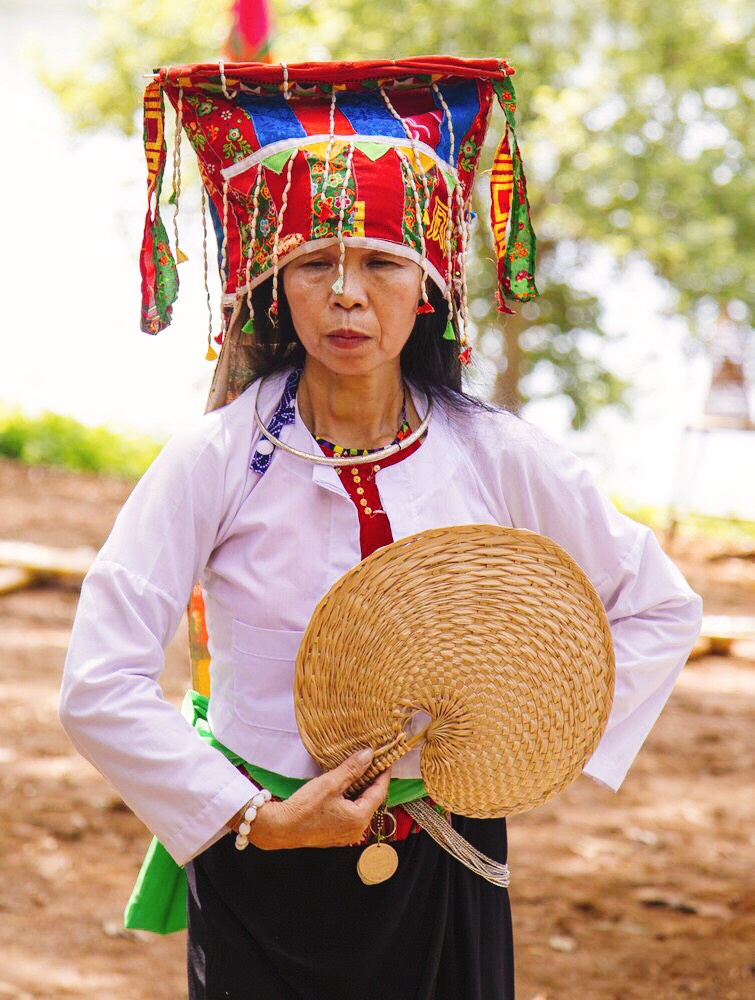When we talk about Vietnam’s diversity, we’re not just talking about the rich landscapes and flavorful cuisines. Probably unknown to many, this country that lies on the eastern margin of the Indochinese peninsula is home to different ethnic minorities that have preserved their own unique ways of life through the centuries.
According to the 2019 comprehensive report on the socio-economic status of 53 ethnic minorities in Vietnam issued by the General Statistic Office (GSO), there are 14.1 million ethnic minority people nationwide, accounting for 14.7% of the population. These ethnic minority groups play an indispensable part in the country’s cultural background, each with their very own language, cuisine, architecture, and traditional costume.
This Women’s Month, we give you a glimpse of the intricate and gorgeous traditional clothing of the women from five of the biggest ethnic minority groups in the country. Traditionally, the costume of each community is developed and modified through generations to be more representative of their way of life, conducive to their everyday economic activities, and reflective of the environmental aspects of their living conditions, with intricate components including their hairstyles, accessories, headbands or scarfs.
Tày People

Accounting for 1.9% of the total population, the Tày ethnic minority is most often present in the northwest provinces of Lang Son and Cao Bang as skilled craftsmen of brocade weaving with their creative, unique weaving patterns.
Interestingly, Tày women find beauty in simplicity as they adorn themselves with clothes made from handwoven cotton, dyed with the mysterious and typical indigo blue or black colors. There are some variations to the outfit pairing options, as women can either match shorter-hem shirts with skirts, or five-flap long shirts with large pants. Lastly, a mulberry waistband would be wrapped around the waist with a longer tail gracefully rested behind to finish the look.
As for jewelry, silver necklaces intentionally designed with a larger circumference, bracelets, rings, and earrings are worn to further emphasize the contrast between the elegant and somewhat modest darker-colored clothing with the bright, shimmering touch of wealth and prosperity. Additional accessories may include a crow-beak turban and a stringed musical instrument called “đàn tính” with three strings, which is also prevalent in Nùng and Thái people’s culture.
Thái People

With a population of more than 1.8 million people, most Thái people reside in the north-central coast and northwest mountainous regions of Vietnam.
Thái women flaunt a youthful dynamic with their attire of close-fitting colorful tops embellished with silver buttons along the front. The characteristic shirts are coupled with dark-colored pencil skirts with sophisticated brocade patterns. On top of that, a purple or green silk waistband is a must-have item for Thái girls, not to mention a multi-function silver chain worn at the side of the hip as a subtle symbol of affluence and elegance.
Once we’re garnished with the basic elements, let’s not forget the fundamental distinction in the Black and White Thái people’s outfits. Generally, White Thái women’s clothing comes with brightly colored V-neck tops and headscarves, while Black Thái women tend to dress in round stand-collar shirts and their unique Piêu scarf, which is a more detailed and intricately woven brocade turban frequently mentioned in traditional poems, songs, and other forms of art.
Mường People

Along with almost 65% of Hoa Binh province being Mường people, the Mường community is scattered among as many as five northern localities.
Not too vibrant and recognizable as Thái traditional costume, Mường women’s outfit appears to be more lowkey yet neat and well-dressed, with a white plain rectangular scarf, a short, lightweight blouse worn outside a brassiere, and an ankle-length skirt, well-known for the elaborate embroidery details.
Mường women also bear a resemblance to females of other communities in the way they bejewel their costumes with the multi-function silver chains called “xà tích” where they keep their betel leaves and other handy items.
Mông People

With nearly 1.4 million people living in northern Vietnam, the Mông or H’Mông indigenous community is comprised of six smaller subgroups, each with distinctive costume features, from the handprint patterns, costume colors to sleeves and collar variations. For example, their famous linen beeswax handprint of geometric shapes is often seen on the back of the shirt of the White Mông people, and on the front and the sleeves for Red and Black Mông people.
Nevertheless, a vibrant, lively overall look is a universal similarity for all subgroups within the Mông group. To be considered culturally appropriate and complete, a set of costumes must include a collared shirt, a pleated skirt, leggings, and a characteristic hat with strings of beads dangling gracefully. To make themselves even more gorgeous, Mông women will add details of silver coins and strings of beads for both artistic and traditional spiritual values.
Khmer People

In Vietnam, the 1.3 million Khmer people native to Cambodia are mainly settled in the Mekong Delta region with their colorful silk attire as a staple of the traditional Khmer values. In their daily lives, Khmer women can wear clothing similar to that of Kinh women, including southerners’ bà ba shirt and trousers or silk pants.
At the same time, Khmer ladies can dress in the traditional sampet chon kpal that they take pride in, a wide canvas of fabric wrapped around their lower part and between the legs into a puffy pair of pants, coupled with mulberry silk short-sleeve tops of various patterns and eye-catching colors, and the signature sbay scarf crossing from the left shoulder to around the right waist.
On special occasions of weddings or pagoda visits, women can show off their elegant beauty through the glitter threaded or bead embroidered silk tops and sophisticated waistbands on top of their sampet chon kpal.
